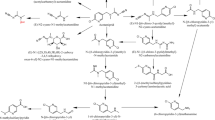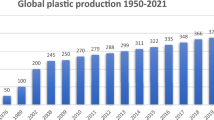Abstract
Fipronil is a phenylpyrazole insecticide that is widely used in Brazilian agriculture for pest control. Although honeybees are not targets of fipronil, studies indicate that this pesticide can be harmful to honeybees. To assess the effects of fipronil in the brain of Africanized Apis mellifera workers, this study focused on the toxico-proteome profiling of the brain of newly emerged and aged honeybee workers that were exposed to a sub-lethal dose (10 pg fipronil per day. i.e. 1/100 of LD50/bee/day during 5 days) of the insecticide. Proteomic analysis identified 25 proteins that were differentially up-regulated or down-regulated when the fipronil-exposed and non-exposed groups were compared. These proteins are potentially related to pathogen susceptibility, neuronal chemical stress, neuronal protein misfolding, and occurrence of apoptosis, ischemia, visual impairment, damaged synapse formation, brain degeneration, memory and learning impairment. The exposure of honeybees to a very low dose of fipronil, even for a short period of time (5 days), was sufficient to cause a series of important neuroproteomic changes in the brains of honeybees.


Similar content being viewed by others
References
Aliouane Y, El Hassani AK, Gary V, Armengaud C, Lambin M, Gauthier M (2009) Subchronic exposure of honeybees to sublethal doses of pesticides: effects on behavior. Environ Toxicol Chem 28(1):113–122
Barbara GS, Zoube C, Rybak J, Gauthier M, Grunewald B (2005) Acethylcoline, GABA and glutamate induce ionic currents in cultured antennal lobe neurons of the honeybee, Apis mellifera. J Comp Physiol 191:823–836
Bernadou A, Démares F, Couret-Fauvel T, Sandoz JC, Gauthier M (2009) Effect of fipronil on side specific antennal tactile learning in the honeybee. J Insect Physiol 55:1099–1106
Biswas S, Russell RJ, Jackson CJ, Vidovic M, Ganeshina O, Oakeshott JG, Claudianos C (2008) Bridging the synaptic gap: neuroligins and neurexin I in Apis mellifera. PLoS One 3(10):e3542
Bradford MM (1976) A rapid and sensitive method for the quantitatioin of microgram quantities of protein utilizing the principle of protein-dye binding. Anal Biochem 2:248–254
Bromensshenk JJ, Henderson CB, Wick CH, Stanford MF, Zulich AW, Jabbour RE et al (2010) Iridovirus and microsporidian linked to honey bee colony decline. PLoS One 5:1–11
Bulet P, Stöcklin R (2005) Insect antimicrobial peptides: structures, properties and gene regulation. Protein Pept Lett 12:3–11
Claudianos C, Ranson H, Johnson RM, Biswas S, Schuler A, Berembaum MR, Feyereisen R, Oakeshott JG (2006) A deficit of detoxification enzymes: pesticide sensitivity and environmental response in the honeybee. Insect Mol Biol 15:615–636
Decourtye A, Devillers J, Genecque E, Le Menach K, Budzinski H, Cluzeau S, Pham-Delègue MH (2005) Comparative sub-lethal toxicity of nine pesticides on olfactory learning performances of the honeybee Apis mellifera. Arch Environ Contam Toxicol 48:242–250
Decourtye A, Lefort S, Devillers J, Gauthier M, Aupinel P, Tisseur M (2009) Sublethal effects of fipronil on the ability of honeybees (Apis mellifera L.) to orientate in a complex maze. In: Oomen PA, Thompson HM (eds) Hazards of pesticides to bees. Arno Brynda GmbH, Berlin, pp 75–83
Decourtye A, Henry M, Desneux N (2013) Environment: overhaul pesticide testing on bees. Nature 497(7448):188
Desneux N, Decourtye A, Delpuech JM (2007) The sublethal effects of pesticides on beneficial arthropods. Ann Rev Entomol 52:81–106
El Hassani AK, Dacher M, Gauthier M, Armengaud C (2005) Effects of sublethal doses of fipronil on the behavior of the honeybee (Apis mellifera). Pharmacol Biochem Behav 82:30–39
European Food Safety Authority (2013) Conclusion on the peer review of the pesticide risk assessment for bees for the active substance clothianidin. EFSA J 11(1):3066
Fiala A, Muller U, Menzel R (1999) Reversible downregulation of protein kinase A during olfactory learning using antisense technique impairs long-term memory formation in the honeybee, Apis mellifera. J Neurosci 19(22):10125–10134
Foote M, Zho Y (2012) 14-3-3 proteins in neurological disorders. Int J Biochem Mol Biol 3(2):152–164
Galceran J, de Graaf K, Tejedor FJ, Becker W (2004) The MNB/DYRK1A protein kinase: genetic and biochemical properties. J Neural Transm Suppl 67:139–148
Ganeshina O, Erdmann J, Tiberi S, Vorobyev M (2012) Depolymerization of actin facilitates memory formation in an insect. Biol Lett 8(6):1023–1027
Garcia L, Garcia CHS, Calábria LK, Cruz GCN, Puentes AS, Báo SN, Fontes W, Ricart CAO, Espindola FS, de Sousa MV (2009) Proteomic analysis of honey bee brain upon ontogenetic and behavioral development. J Proteome Res 8:1464–1473
Gerke V, Moss S (2002) Annexins: form structure to function. Physiol Rev 82(2):331
Greig-Smith PW, Thompson HM, Hardy AR, Bew MH, Findlay E, Stevenson JH (1994) Incidents of poisoning of honeybees (Apis mellifera) by agricultural pesticides in Great Britain 1981–1991. Crop Prot 13:567–581
Gunasekara AS, Truong T, Goh KS, Spurlock F, Tjeerdema RS (2007) Environmental fate and toxicology of fipronil. J Pestic Sci 32:189–199
Halm MP, Rortais A, Arnold G, Tasei JN, Rault S (2006) New risk assessment approach for systemic insecticides: the case of honey bees and imidacloprid (Gaucho). Environ Sci Technol 40:2448–2454
Han P, Niu CY, Lei CL, Cui JJ, Desneux N (2010a) Quantification of toxins in a Cry1Ac + CpTI cotton cultivar and its potential effects on the honey bee Apis mellifera L. Ecotoxicology 19(8):1452–1459
Han P, Niu CY, Lei CL, Cui JJ, Desneux N (2010b) Use of an innovative T-tube maze assay and the proboscis extension response assay to assess sublethal effects of GM products and pesticides on learning capacity of the honey bee Apis mellifera L. Ecotoxicology 19(8):1612–1619
Hernández LG, Lu B, da Cruz GCN, Calábria LK, Martins NF, Togawa R, Espindola FS, Yates JR, Cunha RB, de Sousa MV (2012) Worker honeybee brain proteome. Proteome Res 11:1485–1493
Ki YW, Lee JE, Park JH, Shin IC, Koh HC (2012) Reactive oxygen species and mitogen-activated protein kinase induce apoptotic death of SH-SY5Y cells in response to fipronil. Toxicol Lett 211(1):18–28
Kremen C, Williams NM, Aizen MA, Gemmill-Herren B, Lebuhn G, Minckley R et al (2007) Pollination and other ecosystem services produced by mobile organism: a conceptual framework for the effects of land-use change. Ecol Lett 10:299–314
Kucharski R, Maleszka R (1998) Arginine kinase is highly expressed in the compound eye of the honey bee, Apis mellifera. Gene 211(2):343–349
Kurzik-Dumke U, Lohmann E (1995) Sequence of the new Drosophila melanogaster small heat-shock-related gene, lethal(2) essential for life [l(2)efl], at locus 59F4,5. Gene 154(2):171–175
Li J, Wu J, Begna-Rundassa D, Song F, Zheng A (2010) Differential protein expression in honeybee (Apis mellifera L.) larvae: underlying caste differentiation. PLoS One 5(10):e13455
Lourenço CT, Carvalho SM, Maslapina O, Nocelli RCF (2012) Oral toxicity of fipronil insecticide against the stingless bee Melipona scutellaris (Latreille, 1811). Bull Environ Contam Toxicol 89:921–924
Malaspina O, Silva-Zacarin ECM (2006) Cell makers for ecotoxicological studies in target organs of bees. Braz J Morphol Sci 23(3/4):303–309
Maxim L, van der Sluijs JP (2007) Uncertainty: cause or effect of stakeholders’ debates? analysis of a case study: the risk for honeybees of the insecticide Gaucho®. Sci Total Environ 376:1–17
Michalak M, Lynch J, Groenendyk J, Guo L, Robert Parker JM, Opas M (2012) Calreticulin in cardiac development and pathology. Biochim Biophys Acta 1600(1–2):32–37
Murakami N, Yamaki T, Iwamoto Y, Sakakibara T, Kobori N, Fushiki S, Ueda S (1998) Experimental brain injury induces expression of amyloid precursor protein, which may be related to neuronal loss in the hippocampus. J Neurotrauma 15(11):993–1003
OEPP/EPPO (2003) Environmental risk assessment scheme for plant protection products. Bull OEPP/EPPO 33:141–145
Pham-Delègue MH, Decourtye A, Kaiser L, Devillers J (2002) Behavioural methods to assess the effects of pesticides on honey bees. Apidologie 33:425–432
Pochi D, Biocca M, Fanigliulo R, Pulcini P, Conte E (2012) Potential exposure of bees, Apis mellifera L., to particulate matter and pesticides derived from seed dressing during maize sowing. Bull Environ Contam Toxicol 89:354–361
Qi M, Zhuo M, Skålhegg BS, Brandon EP, Kandel ER, McKnight GS, Idzerda RL (1996) Impaired hippocampal plasticity in mice lacking the Cbeta1 catalytic subunit of cAMP-dependent protein kinase. Proc Natl Acad Sci USA 93(4):1571–1576
Roat TC, Carvalho SM, Nocelli RCF, Silva-Zacarin ECM, Palma MS, Malaspina O (2013) Effects of sublethal dose of fipronil on neuron metabolic activity of africanized honeybees. Arch Environ Contam Toxicol 64:456–466
Rondeau G, Sánchez-Bayo F, Tennekes HA, Decourtye A, Ramírez-Romero R, Desneux N (2014) Delayed and time-cumulative toxicity of imidacloprid in bees, ants and termites. Sci Rep 4. doi:10.1038/srep05566
Rortais A, Arnold G, Halm MP, Touffet-Briens F (2005) Modes of honeybees exposure to systemic insecticides: estimated amounts of contaminated pollen and nectar consumed by different categories of bees. Apidologie 36:71–83
Santos LD, Santos KS, Santos-Pinto JRA, Dias NB, De Souza BM, Dos Santos M, Perales J, Domont GB, Castro FM, Kalil JE, Palma MS (2010) Profiling the proteome of the venom from the social wasp Polybia paulista: a clue to understand the envenoming mechanism. J Prot Res 9(8):3867–3877
Schäfer S, Bicker G (1986) Distribution of GABA-like imunoreactivity in the brain of the honeybee. J Comp Neurol 246:287–300
Shin YJ, Choi JS, Choi JY, Hou Y, Cha JH, Chun MH, Lee MY (2010) Induction of vascular endothelial growth factor receptor-3 mRNA in glial cells following focal cerebral ischemia in rats. J Neuroimmunol 229(1–2):81–90
Skoulakis EMC, Davis RL (1996) Olfactory learning deficits in mutants for Leonardo, a Drosophila gene encoding a 14-3-3 protein. Neuron 17(5):931–944
Suarez I, Bodega G, Fernandez B (2012) Glutamine synthetase in brain: effect of ammonia. Neurochem Int 41(2–3):123–142
Südhof TC (2008) Neuroglins and neurexins link synaptic function to cognitive disease. Nature 455(7215):903–911
Tingle CC, Rother JA, Dewhurst CF, Lauer S, King WJ (2003) Fipronil: environmental fate, ecotoxicology, and human health concerns. Rev Environ Contam Toxicol 176:1–66
vanEngelsdorp D, Meixner MD (2009) A historical review of managed honey bee populations in Europe and United States and the factors that may affect them. J Invert Pathol 10:10–16
Vidau C, Brunet JL, Badiou A, Belzunces LP (2009) Phenylpyrazole insecticides induce cytotoxicity by altering mechanisms involved in cellular energy supply in the human epithelial cell model Caco-2. Toxicol In Vitro 23:589–597
Vidau C, González-Polo RA, Niso-Santano M, Gómez-Sánchez R, Bravo-San PJM, Pizarro-Estrella E, Blasco R, Brunet JL, Belzunces LP, Fuentes JM (2011) Fipronil is a powerful uncoupler of oxidative phosphorylation that triggers apoptosis in human neuronal cell line SHSY5Y. Neurotoxicology 32(6):935–943
Wratten SD, Gillespie M, Decourtye A, Mader E, Desneux N (2012) Pollinator habitat enhancement: benefits to other ecosystem services. Agric Ecosyst Environ 159:112–122
Acknowledgments
This work was supported by Grants from FAPESP (Proc. 2008/05018-7 and 2012/13370-8), BIOprospecTA/FAPESP program (Proc. 11/51684-1), CNPq and CAPES. M.S.P. and O.M. are researchers from the National Research Council of Brazil-CNPq. T.C.R., L.D.S. and K.S.S. were Postdoctoral fellows from FAPESP, and J.R.A.S.P is Ph.D. student fellow from FAPESP.
Conflict of interest
The authors declare that they have no conflict of interest.
Author information
Authors and Affiliations
Corresponding author
Rights and permissions
About this article
Cite this article
Roat, T.C., dos Santos-Pinto, J.R.A., dos Santos, L.D. et al. Modification of the brain proteome of Africanized honeybees (Apis mellifera) exposed to a sub‐lethal doses of the insecticide fipronil. Ecotoxicology 23, 1659–1670 (2014). https://doi.org/10.1007/s10646-014-1305-8
Accepted:
Published:
Issue Date:
DOI: https://doi.org/10.1007/s10646-014-1305-8




